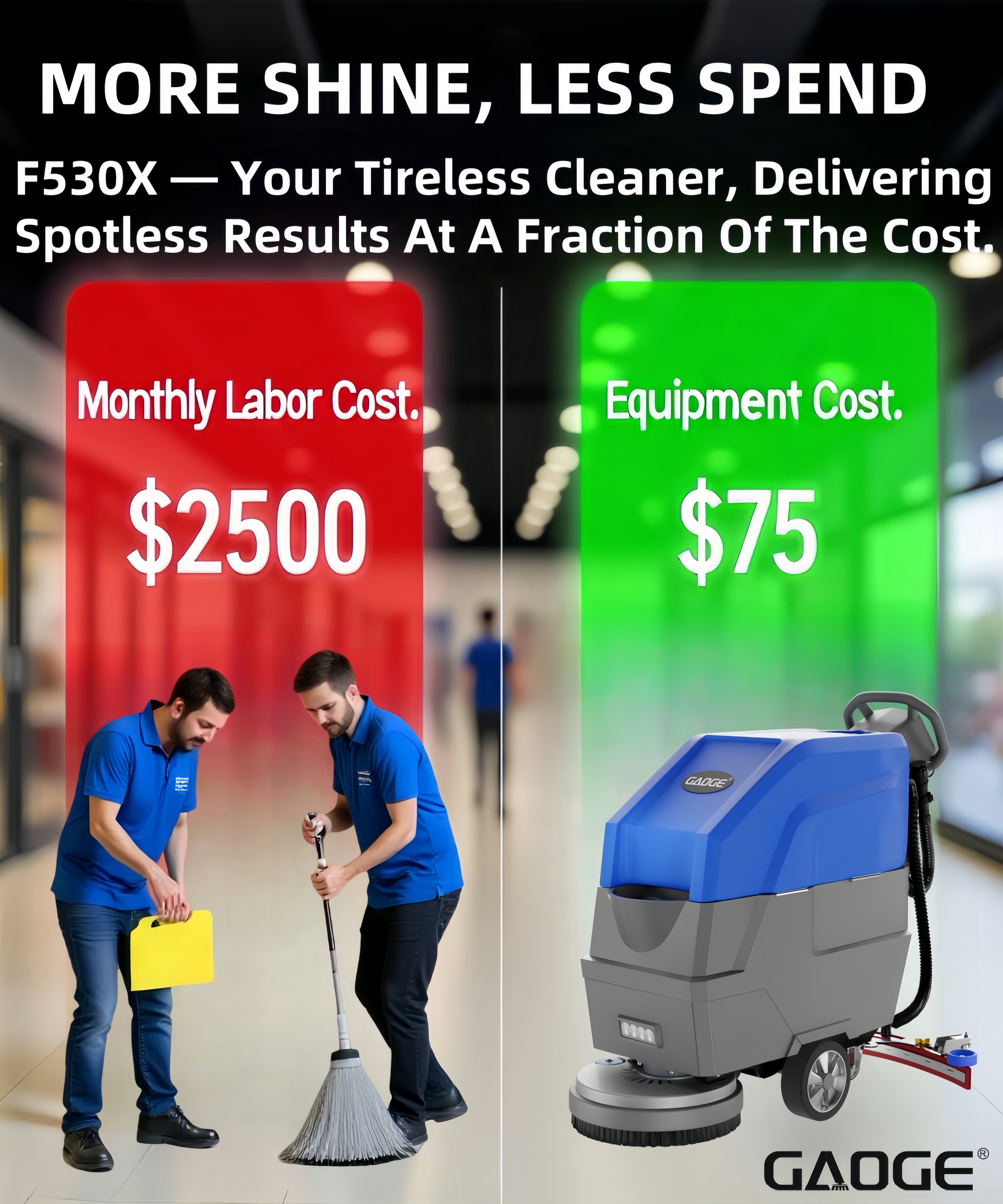절감 할 수 있는 해제: 소유 총 비용 (TCO) 설명
소유의 총비용 (Total Cost of Ownership, TCO) 은 제품 전체의 수명 기간 동안 모든 비용들을 보여주는 재정적 청사진입니다. 고객들은 스티커 가격에 대해 생각하지만 진짜 이야기는 지속적인 비용에 있습니다. 시설이 청소용품을 선택할 때, TCO는 마우스 이외의 것을 고려합니다. 초기 비용, 수리, 화학물질, 전력, 노동자의 임금, 그리고 직원이 바닥에서 떨어져있을 때 사업이 잃는 수익을 계산합니다. 현명한 분석은 종종 더 큰 절감과 더 나은 청소가 현대적인 기계 보조 도구에서 나온다는 것을 보여줍니다.
수동 청소 가 왜 침묵 한 예산 살인자 가 되는가
오래된, 신뢰성 있는 mop은 싼 것처럼 보이지만 그 비용은 그림자에서 몰래 들어옵니다. 월급이 급격히 늘어나기 시작하면, 월급계산에 으로 만든 작업자를 포함합니다. 1 평방피트 면적을 긁는 데 쓰는 추가 시간마다 양말, 손님 서비스, 제품 판매 등으로 소비되는 시간입니다. 계속 빛나는 것이어야 하는 대대는 종종 흔적과 잔해를 남깁니다. 고객이나 임차인들이 불평해서, 연장시간을 더해야 한다는 이유로 임금이 늘어나죠. 일관성 없어지고 명성이 떨어집니다. 계속 빛나는 것이어야 하는 대대는, 대와 잔해를 남기고, 임금 증가를 촉진하는 초과 시간 불만을 강요합니다. 이 시간이 지나도 살아남을 수 있지만 숨겨진 비용은
자동화 를 이용 하는 것 이 청소 를 더 현명한 방법 으로 만드는 이유
자동화 청소 솔루션으로 전환하는 것은 기업에 대한 기술 업그레이드뿐만 아니라 게임 변경입니다. 이 도구들은 노동 비용을 줄이고 청소 속도와 품질을 높입니다. 바닥 청소기 로봇이 조용히 복도를 내려다다니며, 계속 청소하고, 정해진 휴식을 건너뛰는 것을 상상해보세요. 탑재된 센서와 스마트 소프트웨어로 각 모서리마다 표적화된 스크러브가 이루어집니다. 세균이 퍼지는 확률을 줄이고 위생을 새로운 수준으로 끌어올립니다. 바닥은 흠이 없고, 통로도 안전합니다. 그리고 여러분의 팀은 을 끌고 다니는 데 더 적은 시간을 보내고 다른 곳에 가치를 더하는 데 더 많은 시간을 할애합니다.
시간 을 통해 실제적 인 절약 을 찾는다
수동 청소에서 자동화로 전환하기 전에, 똑똑한 기업은 숫자를 잘 계산합니다. 먼저, 기계의 구매 가격, 작동할 수 있는 예상 수 년, 그리고 정기적인 유지 보수 비용을 적어두세요. 연구 결과에 따르면 이 스위치는 시간이 지남에 따라 청소 비용을 30% 줄일 수 있습니다. 어떻게? 더 긴 청소 교대로 인한 임금 감소, 두 배 더 빨리 닦는 기계, 다른 작업을 처리할 수 있는 직원의 자유로움을 생각해보세요. 수학은 보람을 줍니다. 청소부 한 명이 같은 바닥을 걸어서 3시간 동안 닦을 수 있지만 로봇은 30분 안에 닦을 수 있습니다. 더 나아가 팀원들이 더 나은 서비스를 받을 수 있는 시간을 얻습니다.
산업 동향: 청소 에서 자동화 의 증가
오늘날 상업용 청소 산업은 자동화로 빠르게 발전하고 있으며 그 이유는 간단합니다. 기술은 점점 더 좋아지고 고객들은 더 많은 것을 기대합니다. 최근 전세계적으로 건강이 걱정되는 상황에서 시설을 깨끗하게 유지하는 것은 더 이상 좋은 일이 아닙니다. 로봇과 센서 기반 청소 시스템을 제공하는 회사들은 더 높은 기준을 보다 쉽고 짧은 시간에 충족시킬 수 있으며, 고객들에게도 인상적입니다. 자동화를 채택하는 사람들은 이제 청결에 대한 전문가로 변하고, 반복적인 비즈니스와 충성도를 이끌어냅니다.
많은 사업자들이 여전히 값싼 수동 청소가 저렴한 선택이라고 생각합니다. 하지만 이것은 단목적인 견해입니다. 소유비용을 살펴보면 기계가 물과 화학물질 폐기물을 줄이고 노동비를 줄이고 사고와 출근의 위험을 줄여주는 것으로 나타납니다. 자동화 시스템으로 정리가 일관성 있게 이루어지기 때문에, 불평과 재조직이 급격히 줄어들면서 장기적으로 더 많은 비용을 절약할 수 있습니다. 긴 이야기를 요약하자면, 업그레이드는 단지 좋은 일이 아니라 경쟁력을 유지하기 위해 필수적입니다. 산업은 계속 발전할 것이고, 가장 먼저 적응하는 사업들이 가장 빛날 것입니다.


